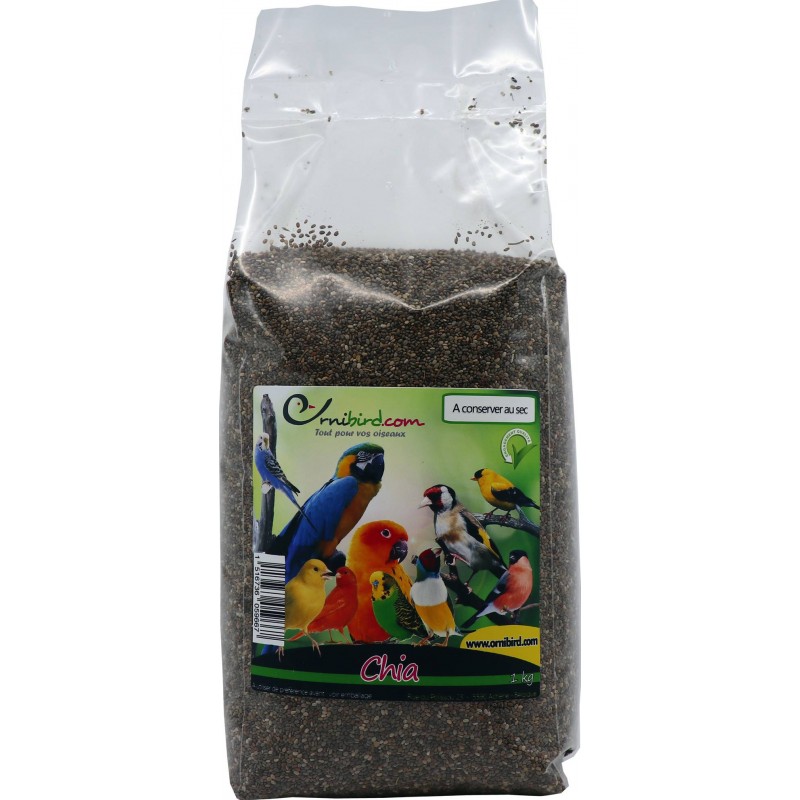




Ornibird.com, le spécialiste pour vos Oiseaux et Animaux !
Ornibird.com, le spécialiste pour vos Oiseaux et Animaux !





(€10.00 kg)
The Chia is a sage. It is an annual plant that can reach 1 m in height, whose scientific name is Salvia hispanica
The composition of the seed of chia closely approximates that of the other seeds mucilaginous, such as flax seeds and psyllium.



The Chia is a sage. It is an annual plant that can reach 1 m in height, whose scientific name is Salvia hispanica
The composition of the seed of chia closely approximates that of the other seeds mucilaginous, such as flax seeds and psyllium. Unlike flaxseed, chia does not, however, anti-nutritional factors, factors that limit the use of flax seeds without heat treatment, prior. The anti-nutritional factors are of cyanogenic glucosides or linatines, inhibitors of the vitamin B6, which prevents its action. The chia has, in addition, a taste much more pleasant than the flax seed and the birds eat it more willingly.
The seeds of sage chia are rich in flavonols (myricétol, quercétol, kaempferol), glycosides of flavonols, chlorogenic acids and caffeic acid.
They are rich in protein and fiber. With a rate that is certainly variable, ranging from 16 to 23 % protein, they are above the wheat (14,7 %) and maize (14 %). They are also very rich in lipids containing a high proportion of omega-3 (alpha-linolenic acid is 68% lipids, 21% of the total), and a report of omega-3 to omega-6 favorable turn around 3-4.
Strengths : the chia seeds provide a good source of calcium and phosphorus and a very good source of dietary fiber and manganese.
The chia has a good anti-oxidant activity provided by its polyphenols (chlorogenic acids, caffeic and flavonols).
Data sheet
Specific References
No customer reviews for the moment.

The Chia is a sage. It is an annual plant that can reach 1 m in height, whose scientific name is Salvia hispanica
The composition of the seed of chia closely approximates that of the other seeds mucilaginous, such as flax seeds and psyllium.

(€10.00 kg)
check_circle
check_circle










